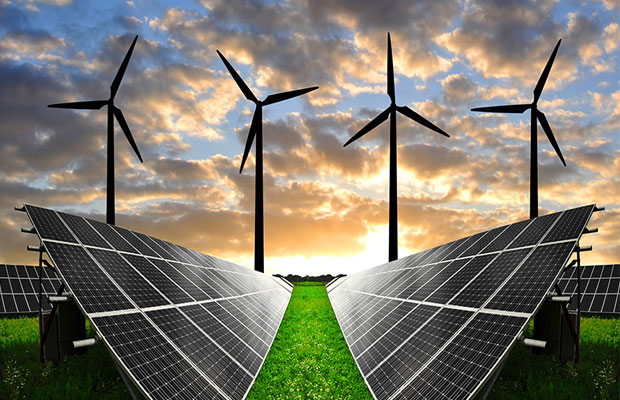
“The cost of renewable electricity and its storage is on a steady decline and could stabilise at around Rs 5 per KWh. This would enable India to move decisively towards renewables for future generation. What this ,means is that India has a ten-year window where no new investments are likely to be done in coal, gas, or nuclear energy generation.”
The Energy and Resources Institute (TERI) in a report estimates that beyond 2023-24, new power generation capacity could be all renewables, based on cost competitiveness of renewables as well as the ability of the grid to absorb large amounts of renewable energy together with battery-based balancing power.
TERI on Monday unveiled the findings of its study report “Transitions in the Indian Energy Sector – Macro Level Analysis of Demand and Supply Side Options”. This report was released alongside two others – one by the Electricity Transitions Commission (ETC), and the other by the Indian National Academy of Engineering (INAE).
The reports were released by Minister of State (I/C) for Power, Coal, New and Renewable Energy and Mines, Piyush Goyal. The TERI report indicates that current installed capacity and the capacity under construction would be able to meet demand till about 2026, keeping India power sufficient. The report estimates that no new investments are likely to be made in coal-based power generation in the years prior to that.
Speaking at the event Piyush Goyal said, “Universal access to electricity is one of the primary aims of the Government, and meeting demand is a major facet of this initiative. We see India becoming the energy capital of the world. India is also committed to lowering the emissions intensity of its development in line with our INDCs towards the Paris Agreement. We are looking at several initiatives towards making solar energy price competitive to coal.”
“The target to achieve the UNFCCC commitments presents tremendous opportunity to put India at the forefront of economies transitioning towards low carbon growth. This includes improving electricity access, clean technology development, manufacturing, and job creation. Our report shows that the cost of renewable electricity and its storage is on a steady decline and could stabilise at around Rs 5 per KWh. This would enable India to move decisively towards renewables for future generation. What this ,means is that India has a ten-year window where no new investments are likely to be done in coal, gas, or nuclear energy generation. The decarbonisation of power generation is also an opportunity to move other carbon based sectors like transport to electricity, thus multiplying the benefits of clean energy generation,” Ajay Mathur, Director General, TERI.
TERI’s demand scenario suggests that the current installed capacity and the capacity under construction and after taking into account retirements, would be able to meet the demand till about 2026, or so. This suggests that there would be no new coal-based capacity investment that would be approved till about for years prior to that.
Between 2014 and 2024, India has a 10-year window. If in this 10 year window, the price of solar and battery reaches the Rs.5/ unit mark, all new capacity additions would be in renewables. In case, this price goal would be achieved, or nearly achieved, by 2023-24, if appropriate infrastructure to absorb large amounts of renewable energy, together with battery-based balancing power, is in place. The INAE report captures the Engineering Interventions Necessary for Achieving 175 GW of Renewable Power by 2022.
BN Suresh, President, INAE, said “Indigenous manufacturing of renewable energy components such as solar PV cells and modules will benefit through job creation, reduce reliance on imported technology, and strengthen India‟s position as a manufacturing hub in line with „Make In India‟ initiative. Achieving high capacity target of renewables in a short time scale requires innovation in technology and cost reduction of project execution, operations, and maintenance.”
A report by the Energy Transitions Commission highlights the need for a major shift in the mix of energy system investment, and a coherent and stable policy framework. Lord Turner, Chair- ETC, said, “If people in emerging economies, like India, are to attain the standards of living enjoyed today by the developed world, large increases in energy use per capita will be needed in many countries. But this increase cannot be met by an unchanged energy system. We must therefore transition to a global energy system that can ensure everyone has access to sufficient affordable modern energy to support a good standard of living and cut carbon emissions from the energy system.”



























